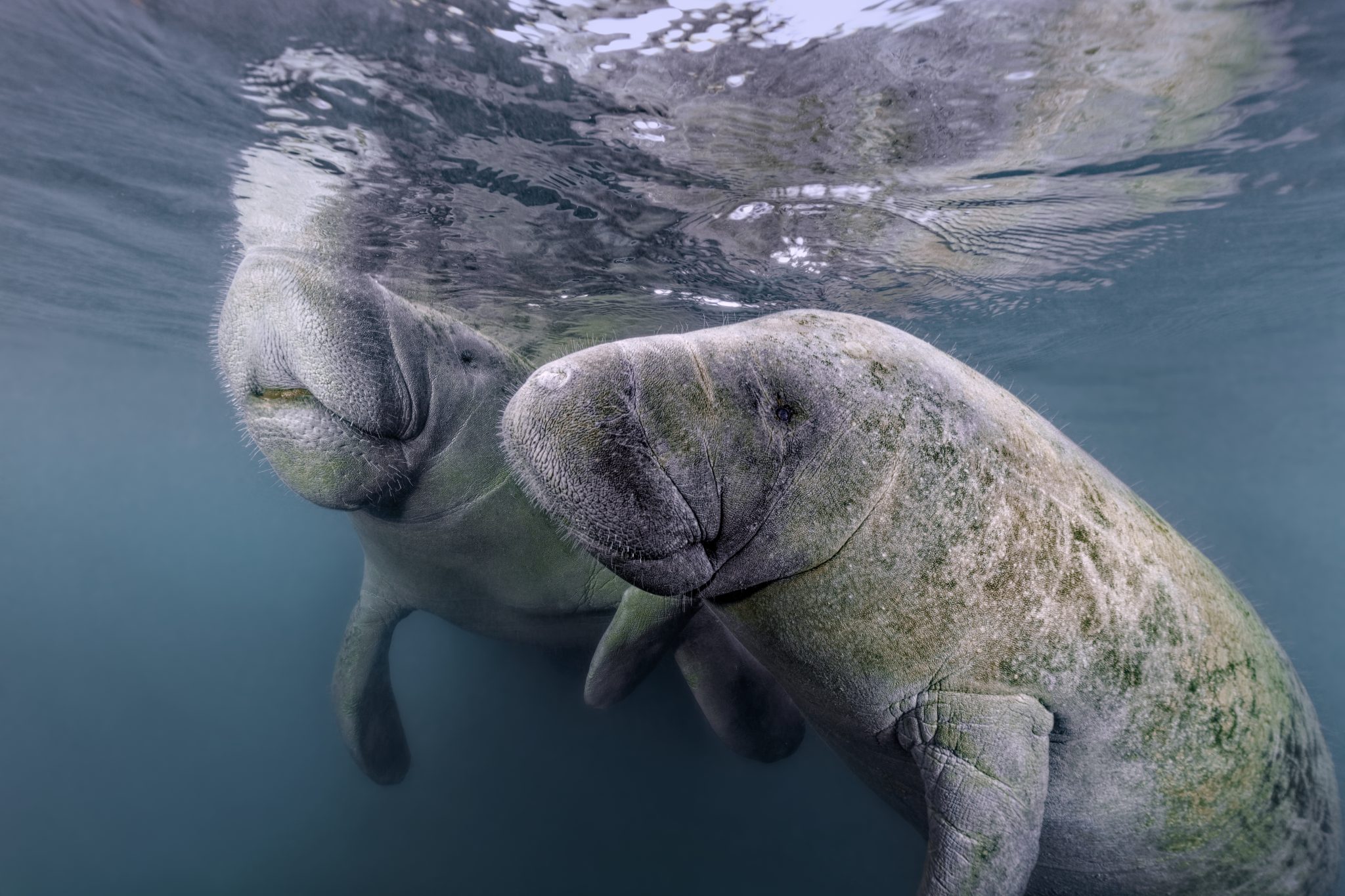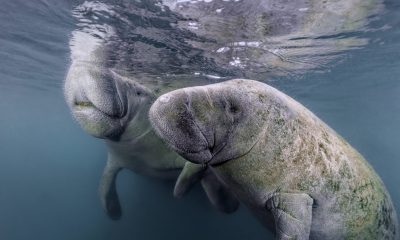Blogs
Why Choose Curaçao as Your Ultimate Dive Vacation Destination

When it comes to planning your next diving vacation, you’re likely seeking a destination that combines outstanding underwater experiences with a variety of non-diving activities to make your trip truly memorable. Look no further than Curaçao, a hidden gem in the Caribbean that offers not only exceptional shore and boat diving opportunities but also a plethora of off-the-beaten-path adventures. Now, keep reading because we are going to take you on a journey to discover why Curaçao is the perfect choice for your next scuba diving vacation.
Where is Curaçao? How to Get There?
Before we delve into the wonders of Curaçao, let’s pinpoint its location and understand how to get there. Curaçao, pronounced “Cure-a-sow,” is one of the ABC islands that make up the Dutch Caribbean. It is situated in the southern part of the Caribbean Sea, between Aruba and Bonaire.
Getting to Curaçao is a breeze, thanks to the well-connected Curaçao International Airport (CUR), which receives daily flights from major cities in North America, Europe, South America, and other Caribbean islands. So, whether you’re flying from Toronto, New York, Miami, Amsterdam, or another destination, reaching Curaçao is convenient and hassle-free.
Curaçao is a Diving Paradise in the Caribbean
Curaçao is renowned as one of the best overall diving destinations in the Caribbean, and for good reason. Its crystal-clear waters, diverse marine life, and impressive underwater landscapes make it a dream destination for divers of all levels. Here’s why Curaçao should be at the top of your dive vacation bucket list:
Exceptional Shore Diving
Curaçao is famous for its accessible and spectacular shore diving sites. With over 60 dive sites just a few steps away from the shoreline, you can explore vibrant coral reefs, intriguing shipwrecks, and breathtaking drop-offs without the need for a boat.
Boat Diving Adventures
If you’re in the mood for boat diving, Curaçao has you covered. The island offers world-class boat diving trips to some of the most remote and pristine dive spots, where you can encounter majestic Caribbean species, massive coral formations, and thrilling wall dives.
Non-Diving Activities
Curaçao isn’t just about what lies beneath the surface. Above water, you’ll discover a wide range of activities to suit all interests. Explore the historic capital, Willemstad, with its colorful Dutch colonial architecture, visit intriguing museums, indulge in mouth-watering foodie delights, hike through scenic national parks, or relax on stunning beaches.
Dive Vacation Tip: Explore the endless vacation possibilities with Curaçao Dive Travel Guide. This guide will provide you with essential tools, local tips, and helpful advice to plan your diving holiday to Curaçao.
Accommodation Options for Every Preference
To make your diving vacation truly comfortable and enjoyable, Curaçao offers a diverse selection of accommodations that cater to different tastes and budgets. Here are a few standout options:
LionsDive Beach Resort
If you’re looking for an eco-conscious diving resort, LionsDive Beach Resort is a top choice. Nestled on a private beach, this resort is not only committed to providing exceptional diving experiences but also to preserving the local environment.
Sunscape Curaçao Resort, Spa and Casino
For those seeking an all-inclusive experience, Sunscape Curaçao Resort offers luxurious accommodations, a variety of dining options, and entertainment, making it a perfect choice for families and couples.
Budget-Friendly Options
Curaçao caters to budget-conscious travelers too. Consider staying at places like All West Apartments or Nos Krusero Apartments, where you can find affordable yet comfortable lodging options. These accommodations often offer sleep, drive, and dive packages, making your trip even more cost-effective.
Eco-Dive Tourism: A Commitment to Conservation
Curaçao takes its commitment to eco-dive tourism seriously, and one shining example of this dedication is the Reef Renewal Curaçao Foundation. This non-profit foundation focuses on coral reef restoration, a critical endeavor to protect and revitalize the island’s coral ecosystems. As a visitor, you can get involved in coral reef restoration activities, such as out-planting coral fragments, contributing to the preservation of Curaçao’s underwater treasures.
Dive Vacation Tip: When visiting Curaçao, you are encouraged to dive responsibly. Learn more about Responsible Scuba Diving in Curaçao and the 10 core attributes of being a sensible scuba diver in Curaçao.
Why Choose Curaçao for Your Dive Vacation?
In summary, Curaçao stands out as an exceptional dive vacation destination that offers:
- Unparalleled shore and boat diving experiences.
- A wide range of non-diving activities and cultural experiences.
- Diverse accommodation options to cater to all preferences and budgets.
- A commitment to eco-dive tourism and coral reef restoration.
So, why wait? Make the decision to choose Curaçao for your next scuba diving adventure. Dive Travel Curaçao’s experienced reservations team is ready to help you plan a personalized dive vacation that suits your interests and needs. Contact Dive Travel Curaçao today to start turning your dream of exploring Curaçao’s underwater wonders into a reality.
In summary, Curaçao offers a truly unique diving vacation experience that combines world-class underwater adventures with a rich array of activities and accommodations to suit every traveler. Dive into the crystal-clear waters, explore vibrant coral reefs, and immerse yourself in the vibrant culture of Curaçao. Don’t miss the opportunity to make memories that will last a lifetime in this Caribbean paradise. Choose Curaçao and let your scuba diving adventure begin!
Blogs
Heading out on the water this Summer? Watch for manatees

As National Safe Boating Week approaches, Save the Manatee® Club is urging boaters, and anyone that enjoys Florida’s waterways, to respect and protect the defenseless manatees that inhabit our shared waterways. From May 18 to 24, leading up to Memorial Day Weekend, the campaign aims to raise awareness about recreational boating safety and the importance of safeguarding imperiled manatees during the summer boating season. This week also emphasizes the importance of encouraging boaters to enroll in a boating safety course.
Manatees are semi-migratory marine mammals that are commonly found in shallow estuaries, bays, rivers, canals, and coastal areas throughout Florida and neighboring states. With some manatees venturing as far west as Texas and as far north as Massachusetts, collisions between these gentle giants and watercraft have become distressingly frequent. Boat propellers and high-speed collisions pose significant threats to manatees, often resulting in severe injuries or even death.
Save the Manatee Club is calling on all water enthusiasts to follow essential manatee safety tips to ensure the well-being of the imperiled manatee:
- Obey Speed Zone Signs: Familiarize yourself with and adhere to posted speed limits to prevent collisions with manatees.
- Reduce Glare with Polarized Sunglasses: Wear polarized sunglasses to enhance visibility and spot manatees below the water’s surface.
- Recognize Manatee Signs: Learn to identify signs of manatees in the area, such as swirls or flat spots on the water caused by their movements.
- Respect Manatee Sanctuaries: Keep a safe distance from posted manatee sanctuaries and avoid pursuing or harassing these marine mammals, as it is illegal and can disrupt their natural behaviors.
- Report Distressed Manatees: In Florida, promptly report distressed, injured, tagged, or orphaned manatees to the Florida Fish and Wildlife Conservation Commission (FWC) at 1-888-404-FWCC (3922). Outside of Florida, report sightings to the appropriate state agency or rescue organization. A list of agencies to contact is available at savethemanatee.org/report.
- Protect Seagrass Beds: Avoid boating over seagrass beds and shallow areas where manatees may be feeding. Stick to deep water channels while remaining vigilant, as manatees also utilize these channels during their travels.
- Dispose of Fishing Line Responsibly: Anglers should properly dispose of or recycle used fishing line to prevent entanglement hazards for manatees.
“Each year, National Safe Boating Week provides an excellent reminder for all of us to be aware that we share our waterways with vulnerable manatees,” emphasized Patrick Rose, Aquatic Biologist and Executive Director of Save the Manatee Club. “With the recent Unusual Mortality Event on Florida’s East Coast claiming an alarming number of manatees’ lives, it is more crucial than ever to prevent preventable deaths caused by watercraft collisions. By following manatee-safe boating guidelines, such as obeying speed zones and remaining vigilant for manatees, everyone on the water can contribute to the protection of these gentle giants.”
Save the Manatee Club offers a range of free materials to help safeguard manatees and raise awareness about manatee-safe boating practices. Shoreline property owners and park or marina managers can order aluminum dock signs to alert others about the presence of manatees in their areas. Boaters and paddlers can request packets containing a safety tips card, a waterproof boat banner, and a decal to display on their vessels, providing the number to report manatees in distress. To view and request these materials, visit savethemanatee.org/resources. Save the Manatee Club will also be hosting a live webinar for National Safe Boating Week on Tuesday, May 21st at 6pm EST. To register, visit savethemanatee.org/register.
Marine Life & Conservation Blogs
Book Review: Shells of the World

Shells of the World: A Natural History by M.G. Harasewych
Shells of the world is a guide to the world of marine, shelled molluscs. And what a varied and interesting world it is. Some of my favourite things to find on a dive are detailed in this book, including disco clams (or Electric File Clams as they are correctly names), the cephalopods, giant clams and sea hares. There are also many on my wish list, top of which is the Nautilus.
Each chapter provides a detailed description of the species, along with beautiful images. You can dive deeper and discover where they live, both with global distribution and the habitat they prefer. Learn about their diet, reproduction and diversity.
Having dipped in and out of this lovely book over the past few weeks, it has inspired me to learn more about this group of animals that we see on most divers, wherever we are in the world. Some of the shells are incredibly intricate and beautiful. I have always agreed with never collecting, or touching, marine life. The description of a certain set of cone shells should be a warning to those that are happy to pick up marine life! One of the cone shells has a local name called the cigarette snail. Why? Because once the venom is in your system from this animal, you only have time to smoke one cigarette before the affects of the venom are fatal!
What the publisher says:
Mollusks are invertebrate animals with a remarkable natural history and a rich fossil record, and their shells are prized for their breathtaking variety and exquisite beauty. Shells of the World provides a wide-ranging look at the incredible diversity of marine mollusks. An informative introduction outlines the lineages covered, followed by a directory section, split into classes, that profiles a broad selection of different taxa to give a sense of their sheer numbers and variety.
- Features hundreds of beautiful color photos, depicting both the live animals and their shells
- Discusses mollusk evolution, anatomy, life cycles, behavior, and ecology
- Describes unique characteristics, distribution, habitat, and size
- Provides valuable insights into the conservation of the world’s marine mollusks
- Ideal for malacologists and shell collectors everywhere
About the Author:
M. G. Harasewych is research zoologist emeritus and former curator in the Department of Invertebrate Zoology at the Smithsonian Institution’s National Museum of Natural History. A fellow of the American Association for the Advancement of Science, he is the author (with Fabio Moretzsohn) of The Book of Shells: A Life-Size Guide to Identifying and Classifying Six Hundred Seashells.
Book Details
Publisher: Princeton University Press
Hardcover
Price: £25
ISBN: 9780691248271
Published: 9th April, 2024
-

 Marine Life & Conservation Blogs3 months ago
Marine Life & Conservation Blogs3 months agoCreature Feature: Swell Sharks
-

 Gear Reviews4 weeks ago
Gear Reviews4 weeks agoGEAR REVIEW – Revolutionising Diving Comfort: The Sharkskin T2 Chillproof Suit
-

 Blogs2 months ago
Blogs2 months agoMurex Resorts: Passport to Paradise!
-

 Blogs3 months ago
Blogs3 months agoDiver Discovering Whale Skeletons Beneath Ice Judged World’s Best Underwater Photograph
-

 News3 months ago
News3 months agoPADI Teams Up with Wellness Brand Neuro to Drive Ocean Change and Create a Blue State of Mind
-

 Gear Reviews3 months ago
Gear Reviews3 months agoGear Review: Oceanic+ Dive Housing for iPhone
-

 Blogs2 months ago
Blogs2 months agoSeagrass Awareness Month brings critical food source for Manatees to centre stage
-

 Marine Life & Conservation2 months ago
Marine Life & Conservation2 months agoSave the Manatee Club launches brand new webcams at Silver Springs State Park, Florida





















